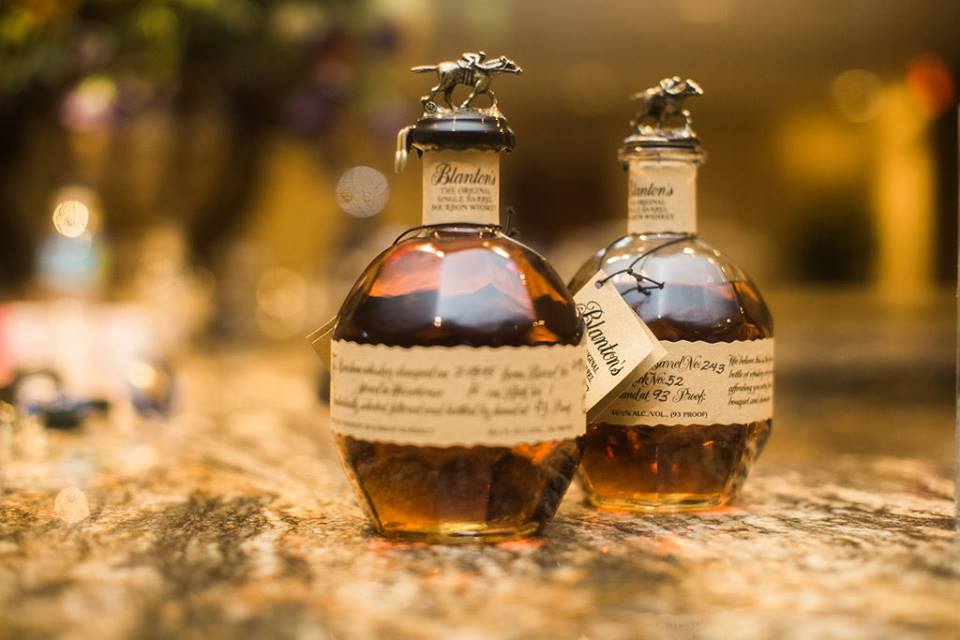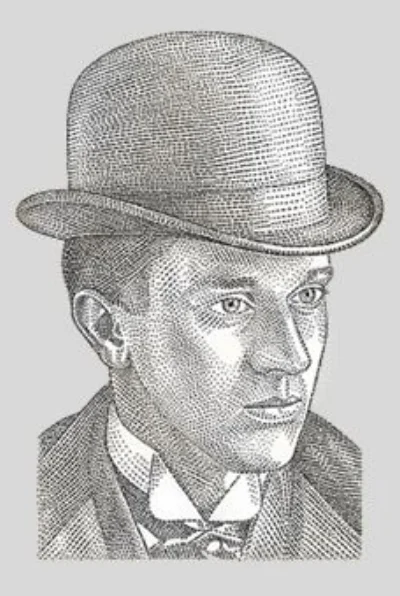
Colonel Albert Bacon Blanton
Sketch Photo of Albert Blanton, provided by Buffalo Trace web site
55 years, "A Company Man"
Colonel Albert Bacon Blanton was born in 1881 on a farm next to the Buffalo Trace Distillery just outside Frankfort, Kentucky. Back then the distillery was called the "O. F. C. Distillery" (an acronym for "Old Fire and Copper). Blanton, who finished high school early joined the distillery as an office boy at the age of sixteen in 1897.
Throughout the next four years, young Albert was promoted several times working in the warehouse, in receiving, in the grist mill and on the distillery floor itself. In fact Blanton gained expertise in all departments of the business including the business office. In 1904 the distillery's name was changed to the "George T. Stagg Distillery." In 1912 Albert was appointed Superintendent of the distillery floor, the bottling facility and the warehouses on the ground. After 34 years of hard work at the distillery, Albert was promoted to the President of the company in 1921.
Colonel Blanton the consummate ambassador of the distillery kept the company alive throughout Prohibition. In order to do this he had to apply and be awarded one of only six special government licenses to produce “medicinal whiskey.” That accomplishment and many others allowed the distillery to stay open during the 13 years of prohibition and is now the "oldest continuously running distillery" in the country.
On January 6th 1937, a chain of cataclysmic storms hovered over the central part of Kentucky and the Ohio Valley and produced a devastating record flood levels over three weeks. By January 27th, the flood had halted all transportation in and around Frankfort, closed schools and businesses. The storm dropped an estimated 42 quadrillion gallons of rain, ice, snow and sleet in the region. At its peak, 981 miles of the Ohio River were 34 feet above the flood stage and water covered 15,000 miles of the Midwest’s highways, resulting in the evacuation of more than two million people.
The flood ransacked the distillery and submerged a great deal of the machinery, stills and roads around all the buildings. Colonel Blanton worked tirelessly for 48 straight hours to insure that the Distillery was back up and running to its traditional capacity in just two days.
Just four years later in 1941, the United States entered the World War II. Despite several requests by the federal government to stop all whiskey production in order to supply pure alcohol to the U. S. Army. Colonel Blanton succeeded in an expertly executed plan of expanding and diversifying the distillery in order to meet the needs of the country while still maintaining the production of his bourbon.
As time went on Albert with his meticulous attention to detail built the main clubhouse and many of the gardens on the distillery grounds in addition to his own personal residence. The home is now called the Stony Point Mansion and it sits high above a hill that overlooks the distillery all the way down to the Kentucky River. Colonel Blanton retired in 1943 but stay on as an advisor to the company until his death.
Colonel Blanton died in 1959 and in tribute to his endless dedication to the business, Elmer T. Lee, a protege of Albert's named the World's first single barrel bourbon after him. That bourbon, introduced in 1984 is credited along with two others bourbons (Elijah Craig and Booker’s) after it with reinvigorating the bourbon industry. Elmer decided to bottle the only the very best casks from the fifth and sixth floors of Warehouse H. This warehouse, built hastily at the end of Prohibition, is characterised by its wooden structure covered with thin tin. Thus, throughout the summer months, the building is heated intensely, which helps the ageing process of these bourbons within the structure even causing the barrels to sweat. Blanton's comes in four variations but only the "Original Single Barrel" (with a Beige label) is available in the United States.
The Blanton’s range is made up of four expressions: Blanton’s Special Reserve at 80 proof (Green label), Blanton’s Original Single Barrel at 93 proof (Beige label), Blanton’s Gold Edition at 103 proof (Clear label with a Gold horse on top of the cork instead of Brass like the others) and Blanton’s Straight from the Barrel at 124 to 126 proof (Brown label with White box). As an indication of the quality of these four bourbons, they routinely pick up prizes and medals in various world competitions now numbering more than 60 awards.
In 1992 Sazerac, a family owned company out of New Orleans purchased the distillery and renamed it the "Buffalo Trace Distillery” in 1999.
Blanton’s has six versions that are sold to the public; they include Blanton’s Original Single Barrel (Beige Label) and Blanton’s Special Reserve (Green Label).
Blanton’s has six versions that are sold to the public; they include Blanton’s Gold Edition (Clear Label) and Blanton’s Straight from the Barrel (Brown & White Label).
Blanton’s has six versions that are sold to the public; they include Blanton’s Black (Dark Brown Label) and Blanton’s Red (Ivory Label), which are Only available in Japan..
Banner photo from Blanton's Bourbon







